Plastics Biodegradability: What Lies Beneath the Label
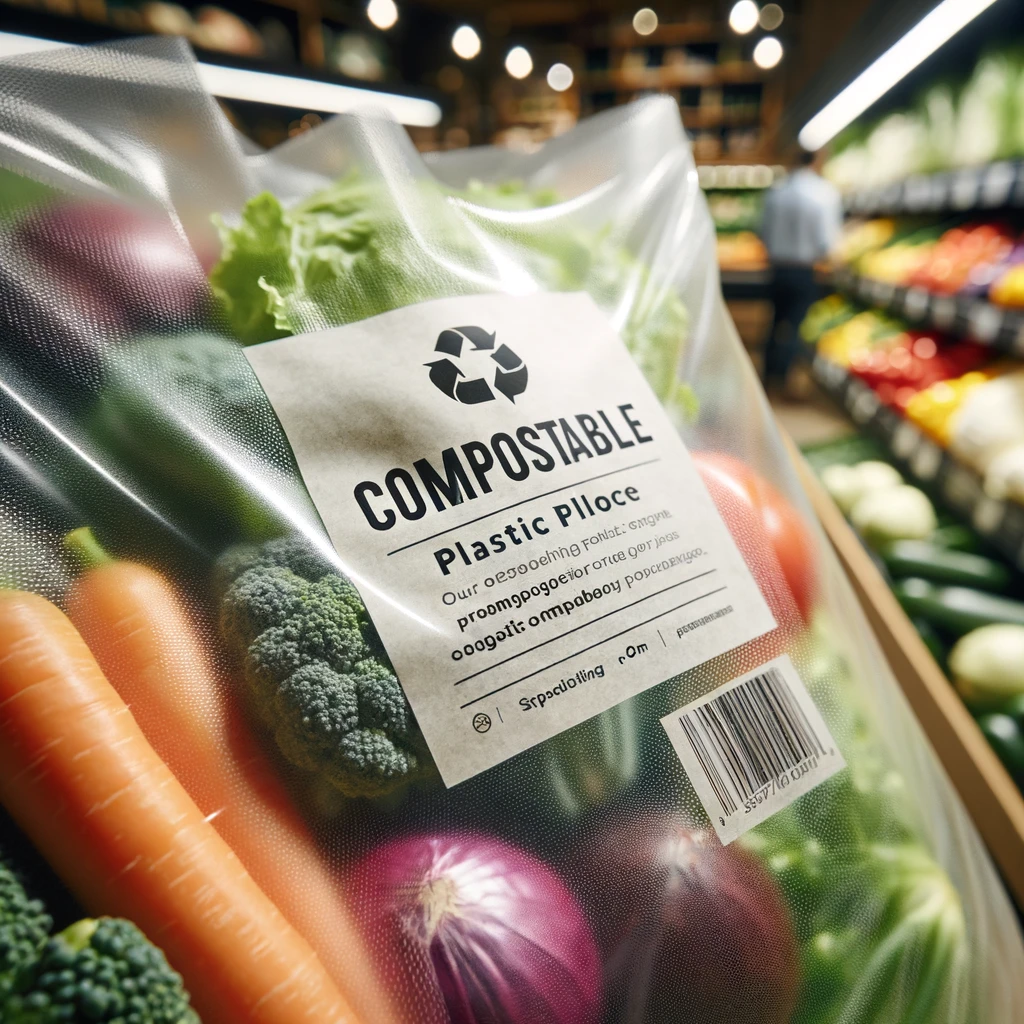
The term “biodegradable” evokes images of materials effortlessly breaking down into the earth, leaving no trace. But what does it truly entail?
According to the Standard Terminology Relating to Plastics ASTM D883-23, biodegradable plastic refers to degradable plastic in which the degradation results from the action of naturally occurring microorganisms such as bacteria, fungi, and algae.
The biodegradation rate can vary depending on factors such as humidity, temperature, and the specific conditions of the environment.
Biodegradability vs. Composting
In today’s plastics landscape, there’s often confusion between biodegradability and composting. While both terms relate to the breakdown of materials, they differ in their processes and environmental impacts. Biodegradable plastics can degrade into natural components under various conditions, whereas compostable plastics specifically break down into compost, which is beneficial for soil health.
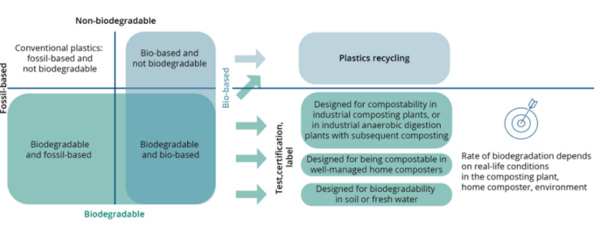
Bio-based, biodegradable, and compostable plastics. Courtesy of European Environment Agency.
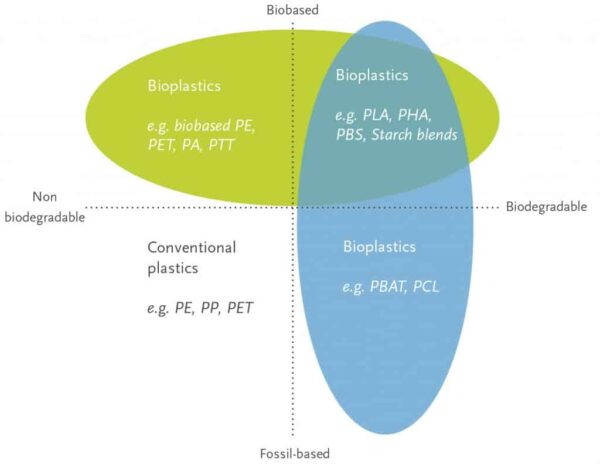
Bio-based, bio-degradable, and compostable plastics. Courtesy of TheSustainablePeople.
Understanding the Terminology
Consumers often confuse terms like “biodegradable” with “bio-based,” assuming that products derived from natural sources are inherently biodegradable. However, several factors, including the material’s chemical structure and crystallinity, influence biodegradability. Therefore, while some bio-based plastics may not biodegrade, certain petroleum-based plastics can exhibit biodegradable properties, as the following table illustrates:
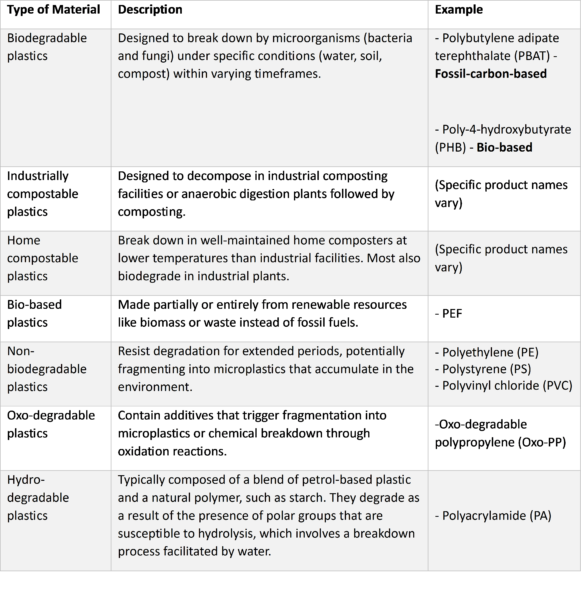
Definitions and examples of bio-based, biodegradable, and oxo- and hydro-degradable plastics. Source of information: Chemistry Europe.
Plastic Standards and Certifications
To address these misconceptions, standardized tests, and certifications exist to assess the biodegradability of plastics. These tests consider factors such as degradation percentage, timeframe, and environmental conditions.
The International Standards Organization (ISO) provides comprehensive biodegradability tests, updated regularly, and supported by the United Nations Standards Coordinating Committee (UNSCC). Examples of some of their most important guidelines are:
- ISO 14855: Determination of the ultimate aerobic biodegradability of plastic materials under controlled composting conditions—Method by analysis of evolved carbon dioxide—Part 1: General method
- ISO 17088 2021: Plastics Organic recycling Specifications for compostable plastics
On the other hand, the American Society for Testing and Materials (ASTM) has developed guidelines to ensure rigorous testing protocols and specifications regarding the plastics industry. Some of the most popular standards are:
- ASTM D6400-23: Standard Specification for Labeling of Plastics Designed to be Aerobically Composted in Municipal or Industrial Facilities.
- ASTM D5358-15(2021): Standard Test Method for Determining Aerobic Biodegradation of Plastic Materials Under Controlled Composting Conditions, Incorporating Thermophilic Temperatures.
Similarly, at the EU level, the European Committee for Standardization (CEN) sets forth specific biodegradability tests, particularly for packaging and agricultural plastics.
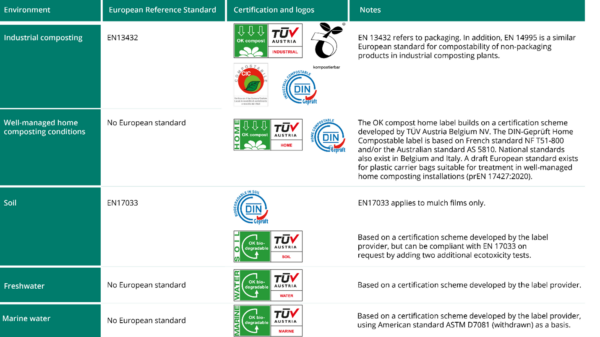
European standards for compostability and biodegradability of plastics in diverse conditions. Courtesy of European Environment Agency.
Standards and certifications are important to ensure the reliability of biodegradable plastics. However, variations in definitions and durations highlight the complexities of assessing biodegradability accurately.
Marketing Implications
The Federal Trade Commission’s Green Guides actively ensure transparency in environmental marketing claims, especially regarding compostability and degradability. As more consumers seek eco-friendly options, companies emphasize the green aspects of their products, but misinterpretations between marketers and consumers can arise.
Organizations like The International Standards Organization (ISO) rely on documents such as ISO 14063 or ISO 14020 that provide guidelines encompassing general principles, policies, strategies, and activities for both internal and external communication concerning environmental matters. These guidelines adapt proven and well-established approaches to the specific conditions inherent in environmental communication.
Waste Management of Biodegradable and Compostable Plastics
The need for appropriate collection and treatment infrastructure to ensure the correct disposal of biodegradable and compostable plastics is crucial. Failure to do so could lead to cross-contamination issues and potential damage to machinery, ultimately undermining the environmental benefits these materials offer.
Addressing this challenge effectively requires enhancing facilities, as the industry navigates this transition, it must remain vigilant against the pitfalls of greenwashing and misleading assertions. Instead, there must be a concerted focus on the development of biodegradable plastics that align with rigorous scientific benchmarks. By embracing this approach, stakeholders can fulfill the promise of biodegradable plastics as a sustainable solution, contributing substantially to a cleaner and greener future. With a steadfast commitment to innovation and environmental responsibility, the path forward holds the potential for transformative progress, ensuring a legacy of sustainability for generations to come.

There is a new terminology for a process similar to oxobiodegradation called “biotransformation”, initiated by the inclusion of a proprietary masterbatch offered by Polymnateria. We might need to include that in the Table above.
The ASTM standard number for industrial compostability biodegradation is incorrect. It is D5338 rather than D5058. Also, ASTM has ASTM D6868 for multilayer materials including a fiber layer and D8410 for thermoset coated paper. It should also be noted that certification agencies can add or delete requirements from specification standards (e.g., ASTM D6400) but not from test methods (e.g., ASTM D5338) without noting the changes.
It should also be noted that specification standards have pass/fail or reporting criteria while test methods cannot be passed or failed and results must be fully reported along with tests conditions.
Thank you for your clarifications, Kelvin. However, I must clarify that in the article, I did not reference ASTM D5058. Rather, I specifically mentioned ASTM D5358-15(2021), a test method designed to determine the degree and rate of aerobic biodegradation of plastic materials under controlled composting conditions in a laboratory setting, particularly at thermophilic temperatures.